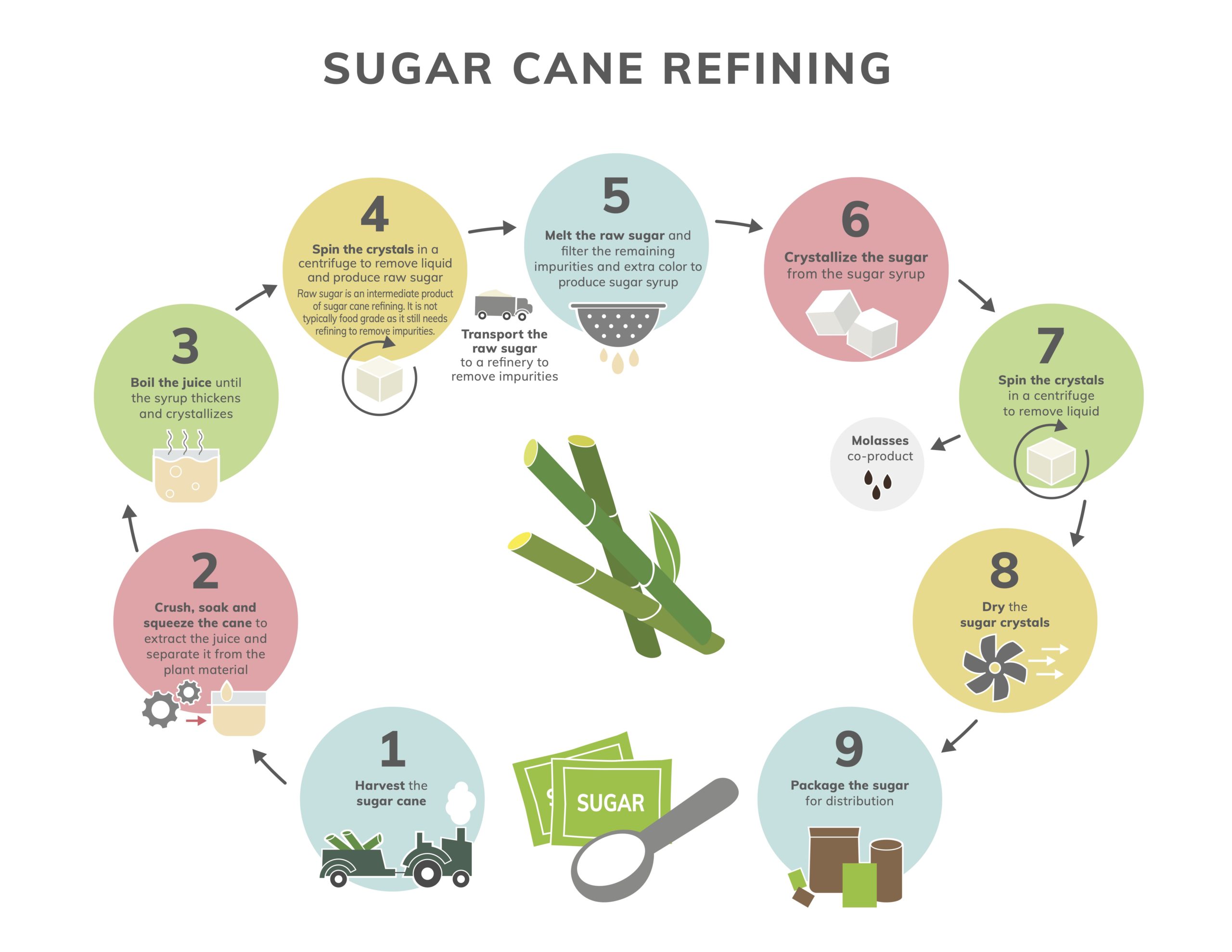Best Cane Sugar Processing Chemicals: Relied On by Market Experts
Best Cane Sugar Processing Chemicals: Relied On by Market Experts
Blog Article
Maximizar Rendimientos Y Minimizar Costos: Estrategias Avanzadas Para La Optimización Química Del Procesamiento De Azúcar De Caña
In the world of walking stick sugar handling, the search of making best use of yields while concurrently minimizing expenses stands as a powerful difficulty that needs a calculated blend of advanced chemical optimization strategies. The ins and outs of this endeavor explore the core of performance, where every component of the process plays an important duty in attaining ideal end results. By checking out the intricacies of chemical evaluation, enzyme application, pH control, filtration, and distillation approaches, a landscape rich with opportunities for improvement and technology emerges. Amidst this intricate web of techniques exists the guarantee of opening untapped potential and transforming the really essence of sugar manufacturing. Cane Sugar Processing Chemicals.
Chemical Analysis for Efficiency
Chemical evaluation plays a crucial function in boosting the performance of sugar walking cane handling by giving vital insights right into the composition and homes of the raw materials. By performing detailed chemical analyses on sugar cane examples, processors can determine the specific concentrations of sucrose, glucose, fructose, and other elements existing in the raw material. This details is crucial for optimizing the various stages of the sugar cane handling chain, from crushing to condensation.
In addition, chemical analysis allows cpus to determine pollutants such as natural acids, proteins, and minerals that can affect the quality and yield of the final sugar item. By quantifying these contaminations, cpus can implement targeted techniques to eliminate or reduce their results, ultimately enhancing the total efficiency of the handling plant.
Additionally, chemical evaluation helps with the surveillance of process criteria such as pH, temperature level, and viscosity, permitting cpus to make real-time modifications to make certain optimal problems for sugar extraction and crystallization. Generally, a comprehensive understanding of the chemical composition of sugar cane is important for making the most of returns, reducing prices, and keeping high product high quality in the sugar production industry.

Enzyme Application for Increased Yields
With a critical method to enzyme utilization, sugar walking stick cpus can significantly improve their returns while preserving functional effectiveness in the manufacturing process. Enzymes play a critical role in sugar cane processing by damaging down complex carbs into less complex sugars, hence boosting the total sugar removal efficiency. By incorporating specific enzymes customized to target the different elements of sugar walking stick, such as cellulose and hemicellulose, cpus can boost the launch of sugars during extraction.
Enzyme usage provides the benefit of optimizing sugar yields from the raw material while reducing the energy and sources required for processing. Through careful option and application of enzymes, sugar walking stick processors can maximize their operations to achieve higher returns and earnings.
Ph Control for Optimum Handling
Enzyme use for enhanced yields in sugar cane handling lays the structure for resolving the crucial facet of pH control for ideal processing efficiency. Preserving the ideal pH degree throughout numerous phases of sugar cane processing is necessary for taking full advantage of returns and lessening prices. By thoroughly monitoring and changing the pH levels at different handling actions, sugar walking cane cpus can improve sugar healing prices, decrease chemical usage, and enhance the general manufacturing procedure.
Advanced Filtering Strategies
Implementing advanced filtration techniques in sugar walking cane handling enhances the efficiency and pureness of the end product with improved splitting up approaches. By including cutting-edge filtration modern technologies, such as membrane layer filtering and turned on carbon filtering, sugar walking cane handling plants can achieve higher levels of sugar healing and boosted quality control.

Activated carbon filtering is an additional advanced strategy that assists in the elimination of colorants, off-flavors, and residual pollutants from sugar walking stick items. By utilizing triggered carbon's adsorption residential properties, this filtering method boosts the clearness and taste of the sugar, fulfilling the high requirements demanded by customers and market policies.
Energy-Efficient Purification Techniques
Energy-efficient purification methods are crucial for enhancing the sugar walking explanation cane handling market's power consumption while preserving high-grade item standards. Conventional purification procedures can be energy-intensive, bring about higher production costs and environmental effects (Cane Sugar Processing Chemicals). Applying energy-efficient purification methods, such as vacuum distillation or molecular distillation, can considerably minimize power demands while boosting overall process effectiveness
Vacuum distillation involves reducing the stress within the purification system, which decreases the boiling point of the liquid mix being refined. This decrease in boiling factor lowers the energy needed for vaporization, leading to energy cost savings contrasted to standard purification methods.
On the other hand, molecular purification makes use of short path distillation techniques under high vacuum conditions to separate compounds based on their molecular weight. This method is particularly helpful site effective for heat-sensitive materials, as it operates at lower temperatures, decreasing energy usage and protecting product quality.
Conclusion

Report this page